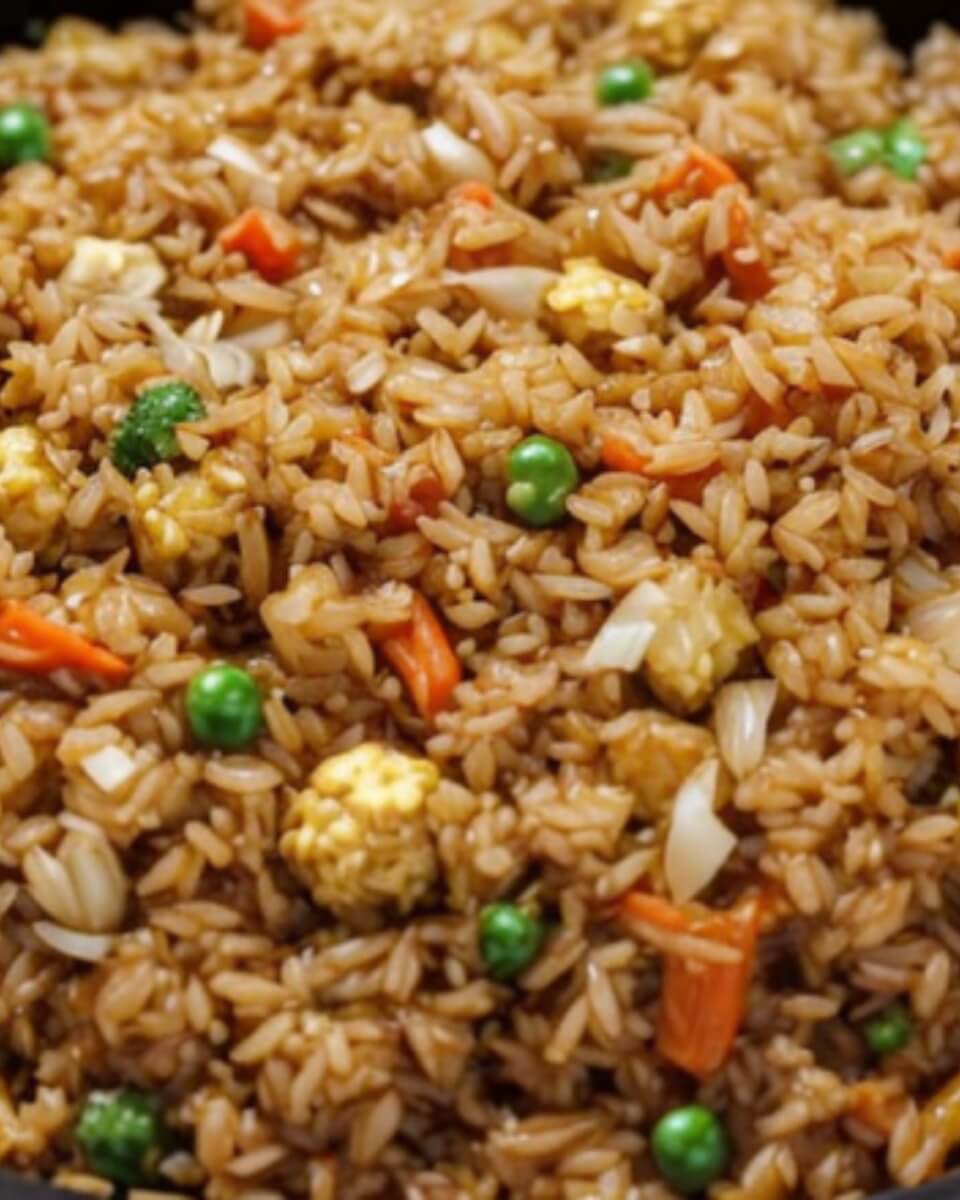Why Fried Rice is Unhealthy: A Clear and Neutral Explanation
Fried rice is a popular dish that is enjoyed by many people worldwide. While it may be delicious, it is not necessarily the healthiest option. There are several reasons why fried rice is considered unhealthy, and we will explore them in this article.
One reason why fried rice is unhealthy is that it is often high in calories. Fried rice is typically made with white rice, which is a refined carbohydrate that can cause blood sugar spikes and contribute to weight gain. Additionally, the dish is often cooked with oil, which adds even more calories.
Another reason why fried rice can be unhealthy is that it is often high in sodium. Soy sauce, which is a common ingredient in fried rice, is very high in sodium. Consuming too much sodium can lead to high blood pressure, heart disease, and other health problems.
Lastly, there is a risk of food poisoning associated with consuming leftover fried rice. If the dish is not stored properly or reheated to the appropriate temperature, it can become contaminated with bacteria that can cause food poisoning. It is important to handle and store leftover fried rice properly to avoid this risk.
Nutritional Composition of Fried Rice
Fried rice is a popular dish in many Asian countries and is enjoyed by millions of people worldwide. However, despite its widespread popularity, it is not considered a healthy food option. In this section, we will examine the nutritional composition of fried rice and explore why it is considered unhealthy.
High Caloric Density
Fried rice is a high-calorie food due to the presence of oil and rice. The oil used in frying the rice contains a significant amount of calories, and the rice itself is a high-carbohydrate food. According to Livestrong, a cup of fried rice contains approximately 235 calories, which is about 12% of the daily calorie intake for an average adult.
Excessive Carbohydrate Content
Fried rice is also high in carbohydrates, which can lead to weight gain and other health problems. A cup of fried rice contains approximately 45 grams of carbohydrates, which is about 15% of the daily recommended intake for an average adult. Excessive carbohydrate intake can lead to elevated blood sugar levels, insulin resistance, and other health problems.
Saturated and Trans Fats
Fried rice is often cooked using oils that are high in saturated and trans fats, which are known to increase the risk of heart disease and other health problems. These fats can also increase cholesterol levels in the body, leading to a higher risk of heart attack and stroke.
Sodium Levels
Fried rice is often seasoned with soy sauce, which is high in sodium. A cup of fried rice contains approximately 706 milligrams of sodium, which is about 30% of the daily recommended intake for an average adult. High sodium intake can lead to high blood pressure, heart disease, and other health problems.
In summary, the high caloric density, excessive carbohydrate content, saturated and trans fats, and high sodium levels make fried rice an unhealthy food option.
Health Impacts
Fried rice is a popular dish in many parts of the world. However, it is not a healthy food option due to the following reasons:
Weight Gain and Obesity
Fried rice is high in calories, which can contribute to weight gain and obesity. One cup of fried rice contains approximately 235 calories, which is more than the calories found in one cup of cooked brown rice (1). Additionally, fried rice is often made with added oils and sauces, which can further increase the calorie count.
Cardiovascular Concerns
Consuming fried foods regularly can increase the risk of developing cardiovascular diseases such as heart attacks and strokes. Fried rice is often cooked with unhealthy oils, which can raise cholesterol levels and contribute to plaque buildup in the arteries (2).
Blood Sugar Spikes
Fried rice is a high glycemic index food, which means it can cause a rapid increase in blood sugar levels. This can be particularly harmful to individuals with diabetes or those at risk of developing the disease. Consuming high glycemic index foods regularly can also increase the risk of developing other health problems such as insulin resistance and metabolic syndrome (3).
Hypertension Risk
Fried rice is often high in sodium due to added sauces and seasonings. Consuming high amounts of sodium can increase blood pressure, which can lead to hypertension and other cardiovascular problems (4).
Overall, it is best to limit the consumption of fried rice and opt for healthier alternatives such as steamed rice or quinoa. If you do choose to eat fried rice, it is important to be mindful of portion sizes and choose healthier cooking methods such as baking or grilling.
Sources:
Cooking Methods and Ingredients
When it comes to the healthiness of fried rice, the cooking methods and ingredients used play a significant role. Let’s take a closer look at some of the factors that contribute to the unhealthiness of this popular dish.
Oil Usage
Fried rice is typically cooked using vegetable oil, which is high in calories and saturated fats. The high heat used during the cooking process can cause the oil to break down and release harmful compounds, including acrolein and acrylamide. These compounds have been linked to increased risk of cancer and other health problems.
Additionally, many restaurants and home cooks use excessive amounts of oil when cooking fried rice, further increasing the calorie and fat content of the dish. To make fried rice healthier, consider using healthier oils such as olive oil or coconut oil and using less of it.
Refined Grains
Another issue with fried rice is the use of refined grains. White rice, which is commonly used in fried rice dishes, is stripped of its fiber and nutrients during processing. This can cause a rapid spike in blood sugar levels, leading to insulin resistance and other health problems.
To make fried rice healthier, consider using brown rice or other whole grains instead. These grains are higher in fiber and nutrients, which can help regulate blood sugar levels and provide other health benefits.
Additives and Preservatives
Finally, many fried rice dishes contain additives and preservatives that can be harmful to our health. MSG, for example, is a common additive used to enhance the flavor of fried rice. However, it has been linked to a range of health problems, including headaches, nausea, and allergic reactions.
To make fried rice healthier, consider making it at home using fresh, whole ingredients and avoiding the use of additives and preservatives. This can help ensure that you are getting a healthy and nutritious meal that is free of harmful chemicals and additives.
Portion Control and Frequency
Serving Sizes
When it comes to fried rice, portion control is important. A serving size of fried rice should be around 1 cup, which contains about 235 calories. However, many restaurants and takeout places serve much larger portions, which can easily contain 2-3 cups of rice. This means that a single meal can contain over 700 calories, which is a significant portion of the recommended daily calorie intake for most people.
It’s important to be mindful of serving sizes and to try to stick to them when eating fried rice. If you’re cooking at home, consider using measuring cups to ensure that you’re not overdoing it. If you’re eating out, try to split a dish with a friend or take half home for later.
Consumption Habits
Another factor to consider when it comes to the healthiness of fried rice is consumption habits. Eating fried rice frequently can lead to overconsumption of calories, which can contribute to weight gain and other health issues. It’s important to enjoy fried rice in moderation and to balance it out with other healthy foods.
If you’re looking to make fried rice a bit healthier, consider adding more vegetables and protein to the dish. This can help to increase the nutrient content and make the dish more filling, which can help you to eat less overall. You can also try using brown rice instead of white rice, which is higher in fiber and can help to keep you feeling full for longer.
Overall, fried rice can be a delicious and satisfying dish, but it’s important to be mindful of portion sizes and consumption habits to ensure that it’s a healthy addition to your diet.
Healthier Alternatives
When it comes to fried rice, there are a few healthier alternatives that we can consider. By swapping out some of the less healthy ingredients and incorporating more nutritious options, we can still enjoy a delicious and satisfying meal without compromising our health.
Brown Rice Options
One of the easiest swaps to make is using brown rice instead of white rice. Brown rice is a whole grain that is packed with fiber, vitamins, and minerals. It is also digested more slowly than white rice, which means it can help us feel fuller for longer and prevent blood sugar spikes.
Vegetable Incorporation
Another way to make fried rice healthier is by incorporating more vegetables. Not only do vegetables add flavor and texture to the dish, but they also provide essential nutrients and fiber. Some great options to try include broccoli, carrots, peas, bell peppers, and onions.
Lean Protein Choices
Lastly, choosing lean protein sources can help make fried rice healthier. Instead of using fatty meats like pork or sausage, we can opt for leaner options like chicken breast, shrimp, tofu, or eggs. These choices are lower in saturated fat and calories, but still provide plenty of protein to keep us feeling satisfied.
By making these simple swaps and additions, we can enjoy a healthier version of fried rice that still tastes great.
Frequently Asked Questions
What nutritional drawbacks does fried rice have?
Fried rice is often high in calories, fat, and sodium. The oil used to fry the rice adds a significant amount of calories and fat to the dish, while the soy sauce and other seasonings used to flavor the rice can be high in sodium. Additionally, the vegetables and meats added to the dish may not be prepared in a healthy way, further increasing the calorie and fat content of the dish.
Can consuming fried rice contribute to weight gain?
Yes, consuming fried rice regularly can contribute to weight gain. Fried rice is often high in calories and fat, which can lead to weight gain over time. Additionally, the high sodium content of fried rice can cause water retention, which can also contribute to weight gain.
How does fried rice impact cholesterol levels?
Fried rice is often high in saturated and trans fats, which can increase LDL (bad) cholesterol levels and decrease HDL (good) cholesterol levels. Consuming foods high in saturated and trans fats on a regular basis can increase the risk of heart disease and other health problems.
What are the health concerns associated with eating fried rice regularly?
Eating fried rice regularly can increase the risk of obesity, heart disease, high blood pressure, and other health problems. The high calorie and fat content of fried rice can contribute to weight gain and high cholesterol levels, while the high sodium content can lead to high blood pressure and other health issues.
Does fried rice offer any health benefits when compared to plain white rice?
Fried rice does not offer any significant health benefits when compared to plain white rice. In fact, the frying process can strip the rice of some of its nutrients, making it less nutritious than plain white rice.
Are there healthier alternatives to traditional fried rice?
Yes, there are healthier alternatives to traditional fried rice. Brown rice, quinoa, or cauliflower rice can be used instead of white rice to increase the fiber and nutrient content of the dish. Additionally, using healthy oils like coconut oil or olive oil, and adding plenty of vegetables to the dish can make it healthier and more nutritious.

